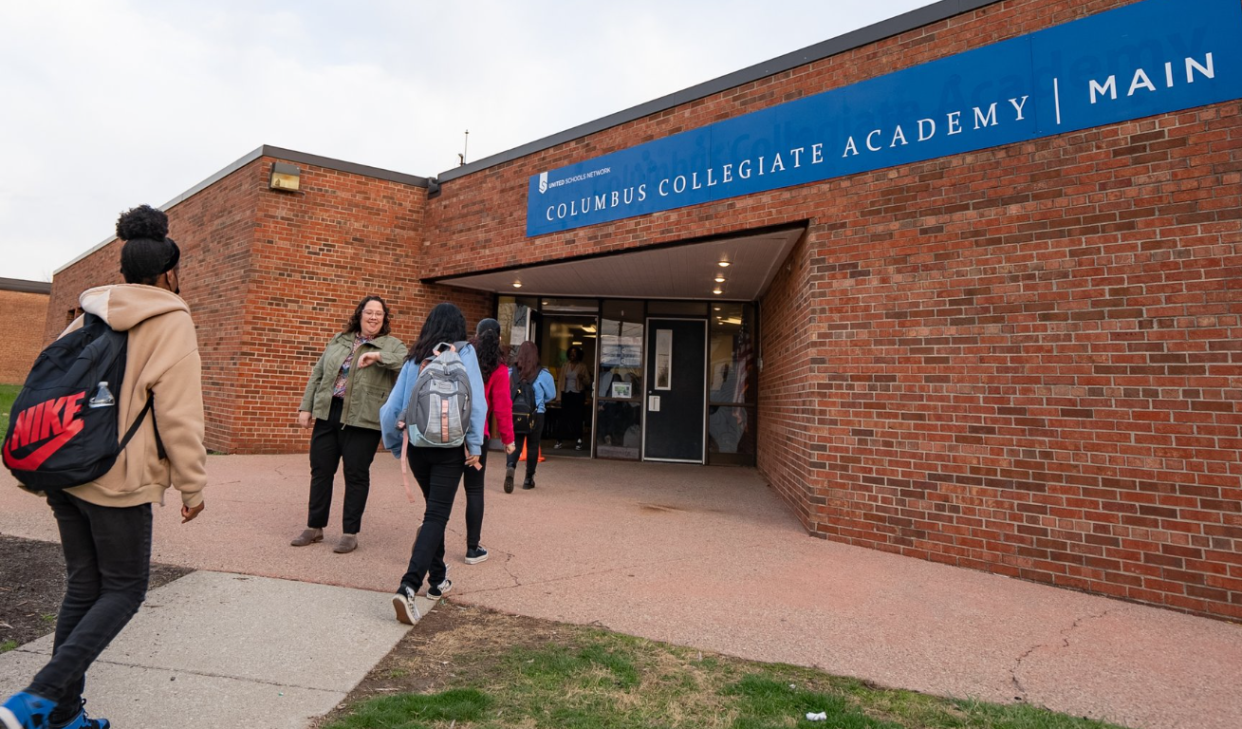It is beyond time that Ohio funded charter schools fairly| Opinion

- Oops!Something went wrong.Please try again later.
Aaron Churchill is the Ohio research director for the Thomas B. Fordham Institute, an education policy think tank based in Columbus.
School funding is again a hot topic in the Ohio Statehouse. Both Gov. Mike DeWine and House lawmakers have proposed sizable increases to K–12 education funding in their budget plans, but no agreements have yet been reached on how much more to spend or how to allocate those dollars.
As lawmakers begin to hammer out a final education budget, they need to address one critical issue: The chronic funding gap faced by Ohio’s public charter schools.
More: Here's what some area schools are saying about K-12 provisions in Ohio House budget
Since their beginnings in 1998, Ohio charters have been woefully underfunded, receiving on average 30% less per pupil in total taxpayer support than nearby schools operated by public school districts. The gap is mostly due to charters’ lack of local revenues, which provide massive sums to traditional districts. Those local property tax dollars don’t “follow” students into charter schools — and the state has never fully covered that loss.
With fewer dollars, charters struggle to compete for teacher talent and to provide students with supplemental supports and enrichment opportunities. Lower funding levels also constrain high-quality charters from expanding to reach more youngsters in need of a great education.
That is fundamentally unfair to students whose educations are restricted just because of their choice of schools. Worse yet is that most charter students in Ohio are low-income, Black, or Hispanic. A majority of the students live in poorer communities, including roughly 20,000 students in Columbus. Many have chosen to attend a charter because their local district was failing to meet their educational needs. Charter school kids don’t deserve to be shortchanged.
Lawmakers now have a chance to right this wrong. Ohio Gov. Mike DeWine, to his credit, has recognized the large funding gap. His budget proposal calls for a sizable funding increase for a program that provides extra support to high-performing charter schools (determined by state ratings). This would be a huge step forward for the hundred schools that qualify for such aid.
Yet even then, charters would still be left shortchanged.
To bridge more of the gap, legislators should create an equity supplemental payment for all students attending brick-and-mortar charters. At an extra $1,000 to $1,500 per pupil, this addition would bring overall charter funding to about 90% of what public school districts receive. This would put charters on a more even playing field, while moving Ohio to closer alignment with states such as Massachusetts and Texas that fund charters at about this rate.
Would these added dollars be put to good use? That’s a fair question — not only for charters, but also for districts that are slated to receive big increases in this year’s budget.

Fortunately, Ohio charter schools are now held rigorously accountable for their results, thanks to landmark reforms enacted by the legislature in 2015. As a result, the charter sector has shaped up and underperformance is no longer tolerated. More than 100 low-performing charters permanently closed between 2016 and 2022.
Stricter accountability has also yielded learning gains for charter students. In a 2020 study commissioned by my organization, Ohio State University professor Stéphane Lavertu showed improved sector performance in recent years along with strong, positive impacts of brick-and-mortar charters on student achievement, especially for Black and Hispanic pupils.
Behind these results are charters such as Columbus Collegiate Academy, The Graham School, and KIPP Columbus. They and dozens of other outstanding charters have long provided an excellent education for students. They could do even more for students with fair funding.
Background: KIPP Columbus staff votes to unionize with 'strong majority' of 67% to 33%, union says
Simply put, charter students’ education shouldn’t be worth less than their public school district peers. With strong accountability now in place, it’s time for Ohio lawmakers to make equitable charter funding a reality.
Aaron Churchill is the Ohio research director for the Thomas B. Fordham Institute, an education policy think tank based in Columbus.
This article originally appeared on The Columbus Dispatch: Ohio should create equity funding for charter school students| Opinion

